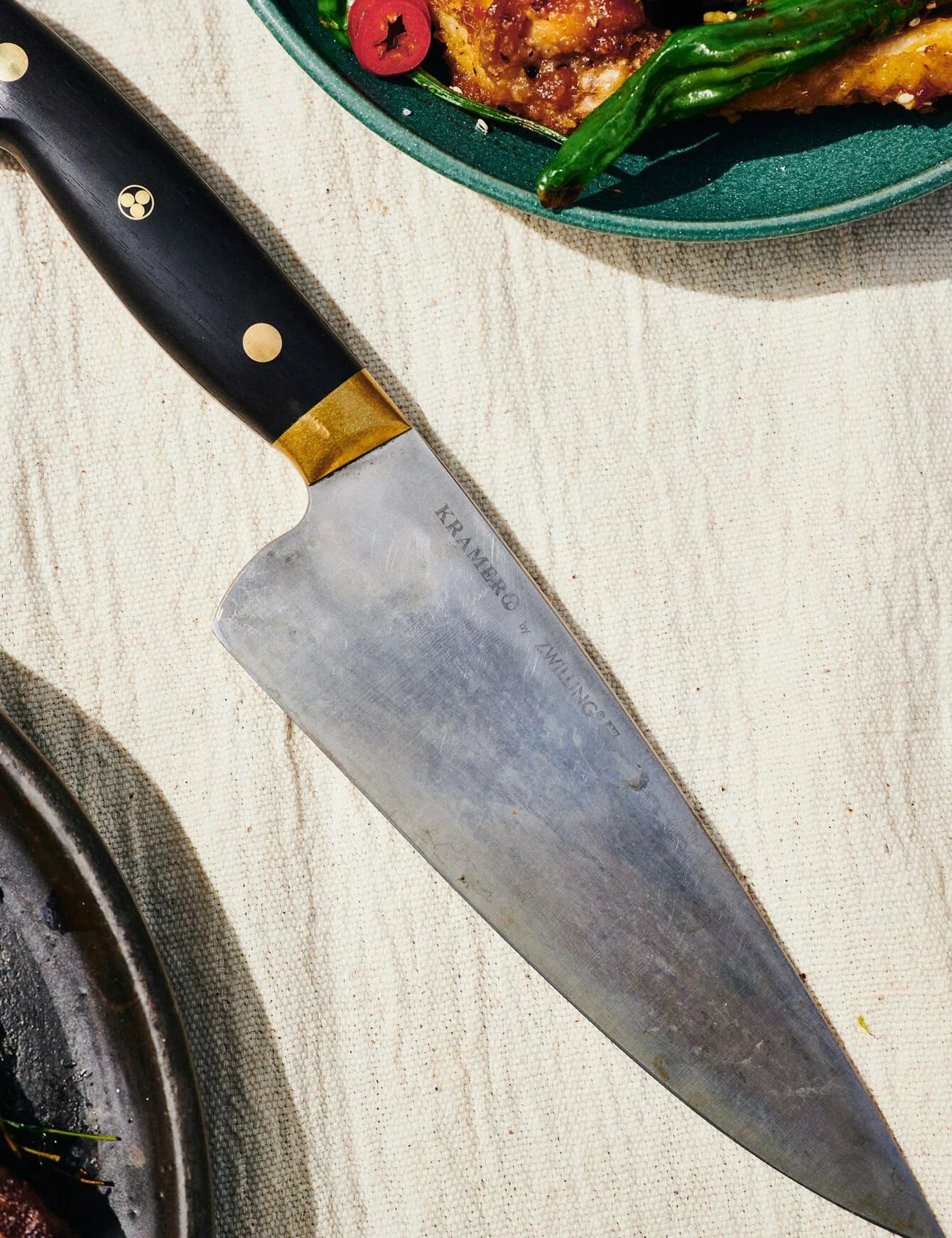Magnus Pettersson has been caring for the knives of professional chefs for more than 25 years. He often jokes that he’s a knife doctor, and he both loves and hates carbon steel knives. If you ask him what you would get from a carbon steel knife that you wouldn’t a stainless steel knife, he’ll laugh, “Rust!”
From a practical point of view, chefs use high carbon blades because they can get sharper and hold their edge better than knives made from stainless steel. There’s also a certain level of romanticism, one even Pettersson says he isn’t immune to. “Knives are utilitarian for me. They’re tools,” he says. “Tools that tell stories, and nothing tells a story like a carbon steel knife.”
Now a lead sharpener at new mail-in knife sharpening service KnifeAid, Pettersson likens a carbon steel knife to a pair of worn-in jeans. “I can tell whether the person who owns the knife uses a push cut or pull cut motion, how they store the knife and their dominant hand pretty quickly. It’s beautiful.” Here’s how to take care of a carbon steel blade, according to an expert.
Don’t Sweat the Stains
Stains and rust are naturally occurring when using carbon steel knives. “If you’re bothered by having to wipe the knife every so often while cooking, or mind a little rust, I wouldn’t [use a carbon steel knife],” Pettersson says. “Most nicer stainless steel knives are so good today there isn’t that huge of a difference in edge retention and whatnot.”
Build Patina Early
With his personal knives, Pettersson says the first thing he does is force a patina onto the blade to protect it from rust. “You can do it with almost anything with acid in it: instant coffee, vinegar, potatoes — lots of things,” he says. “Just rub it on the blade and polish them in. This makes a better shield for the steel than whatever it ships with.”
 Henry Phillips
Henry Phillips